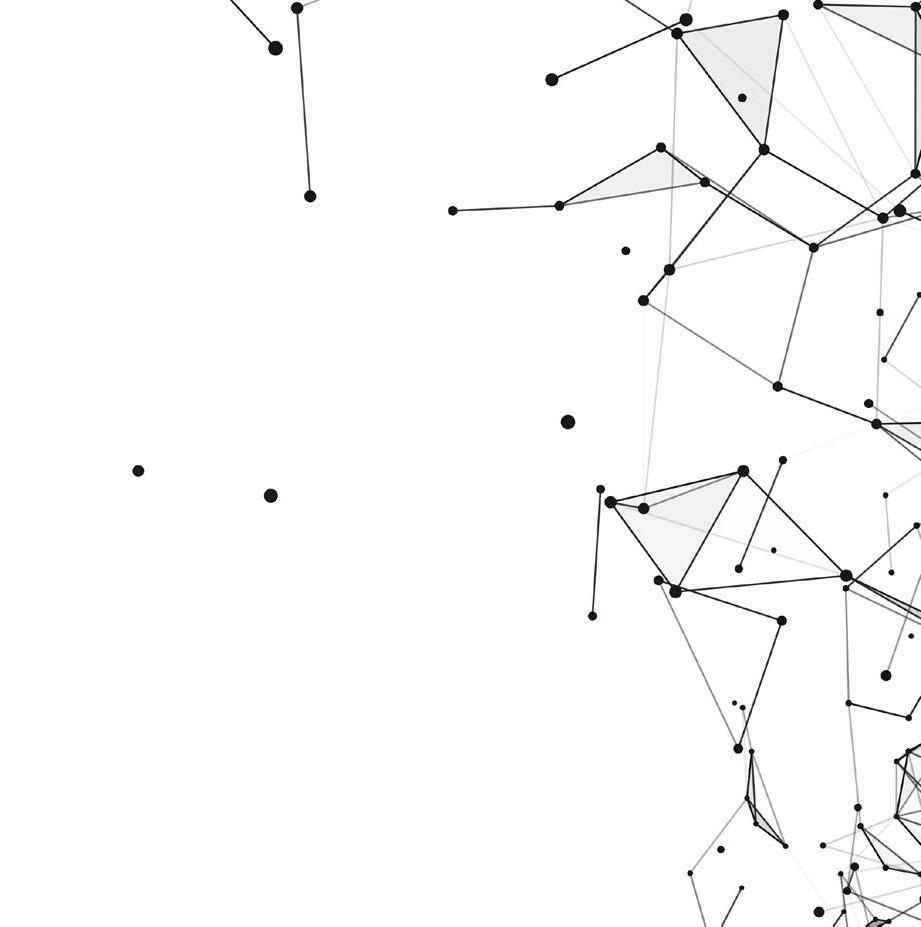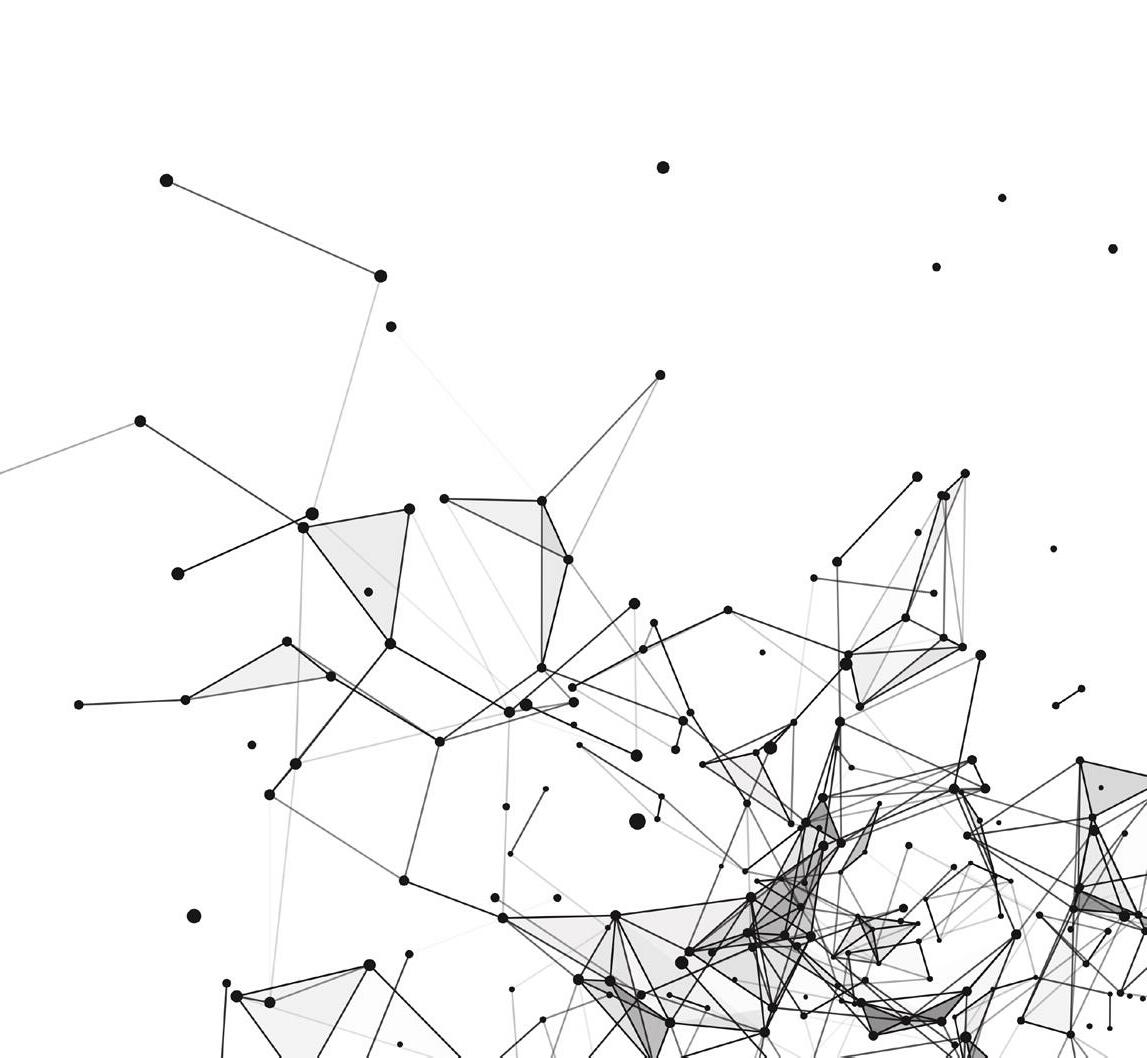
8 minute read
Big Data and Its Impact in AI By Keith Darlington
Big Data and its Impact on AI
BY DR KEITH DARLINGTON
Advertisement
“It is not the strongest of the species that survive, nor the most intelligent that survives. It is the one that is the most adaptable to change.” - Charles Darwin
Adaptability is a key factor in AI systems today and Big Data is helping to make that possible. It has been said that Big Data is to AI what oil is to the automobile – data is the new oil. Big Data has been the catalyst for the success of the current generation of AI systems because it has spawned a swathe of AI applications that use pattern recognition – hitherto thought to be very difficult to implement. The term Big Data was coined to refer to the growing volume of data collected via the Internet and Web applications. With the rise of social networking and online retailing, copious amounts of data are now available daily. When combined with deep learning AI algorithms, this data can provide valuable insights and add value to businesses.
Examples include applications like Google’s language translator and
Amazon’s Alexa. In this article, I look at how the use of Big Data has transformed AI.

THE BEGINNINGS OF BIG DATA
The Big Data concept ignited in 2008 although many earlier projects would have fulfilled its meaning. By that year, Google had started a project called Google Flu Trends (GFT) to monitor flu patterns. It was receiving millions of daily searches and one particular search query on flu caught the eye of researchers. Google can do hundreds of billions of searches to enable flu predictions, such as where it will spread, and how severe it is likely to be. GFT had access to masses of data – leading to good predictions. Other applications followed, such as Farecast, used by Microsoft’s BING. This was a free service that enabled users to forecast flight ticket prices when queried by advising them whether to buy now or wait in the hope that the price may drop. Users again had access to masses of data – brute force enabled more accurate predictions. Both GFT and Farecast are no longer in use. Nevertheless, they were the catalysts for the ubiquitous trend that followed.
CHARACTERISTICS OF BIG DATA
Big Data is characterised by the three Vs:

• The volume of data collected. The Internet has precipitated a world awash with data. This data can be human-generated – such as by email and written documents, or machine-generated, such as via smart wearable sensors for personal health monitoring, or CCTV photographs. Furthermore, every day, search engines (such as Google), blogs (such as
WordPress), social networking (such as Facebook,
Twitter, Instagram, and LinkedIn) videos (such as
YouTube), photographs (such as Flickr, Google Photos,
Amazon photos), as well as the many governments and government agencies and businesses worldwide acquire and publish bountiful amounts of data in the forms of text, photographs, video, and sound. • The velocity or speed at which the data needs to be collected, stored and processed. Data comes from many sources thick and fast and therefore, has to be processed quickly – in real-time. Some of this data may contain noise – meaning that some of it will not always be correct, accurate, or complete. But if they are small amounts, then they will not have any significant impact on the learning outcomes. • The variety of data that is used. Internet data comes in a variety of shapes and sizes – mostly from heterogeneous sources. Before the Internet, data generally was seen as structured that came from limited-sized data sources.
Structured data would be stored in an organised format – such as a database customer record (called a relational database format) with fields representing the customer ID, name, address, credit limit, and so on.
But as the Internet and Web grew, along with increased computer power, cloud storage, and machine learning
AI algorithms, it was possible to process data that no longer needed to be structured or heterogeneous or work with small data sets. Big Data file access would normally use computer clusters. These are several computers networked together so that tasks would be shared by the network, although the user would only use one point of access.
AI APPLIED TO BIG DATA
Not all data analytics use AI. For example, descriptive statistical methods are used to find aggregates and identify trends enabled by giving meaning to data. These methods of statistical analysis are trustworthy because such large volumes of data ensure greater probabilities of truth of the projected results.
AI is used to gain insights through deep learning data analytics. The term machine learning refers to methods that enable the machine to learn without being explicitly programmed by humans. And whilst neural networks had been around for some time, they were improved significantly with the variant called deep learning.
These insights could be gained from understanding why something has happened – i.e., diagnostics. Deep learning could also predict when or what will happen in the future and provide solutions or recommendations to counteract the predicted outcome.
For example, suppose a large international car manufacturer introduced a hybrid fuel model five years ago. Suppose that the company has been concerned by lower sales volumes in Europe in the last four quarters. Big Data analytics has identified a trend over several quarters describing what is happening – such as sales aggregates during these periods.
Applying deep learning algorithms may provide a diagnosis of the reasons that influenced the low sales – such as customer difficulties obtaining variants of this model. The devil is in the detail as they say, and <deep learning can often reveal insights that have deep explanations underlying why something is happening – such as distribution problems for supplies following Brexit in the UK. AI deep learning algorithms could also predict future events. For example, what is going to happen in the next quarter – such as sales continuing to decline. AI algorithms could also predict how best to prevent this – such as by moving supply chains.
BIG TECHNOLOGY COMPANIES USE BIG DATA
Big Data has led to a massive spurt of activity in AI with large technology companies –such as Facebook, Microsoft, Google, and Apple. The invention of the smartphone has meant mass access to digital cameras with instant uploading capabilities. This had triggered an explosion in the number of images posted online daily estimated to be over 3.2 billion in November 2020 (https://theconversation. com/3-2-billion-images-and-720-000-hours-of-video-areshared-online-daily-can-you-sort-real-from-fake-148630).
Being able to analyze these images, and other data, so that their contents could be understood would give them extensive knowledge about their users. Massive investment in AI from these companies as well as Google, Apple, and Amazon followed. But these images were often unlabelled, in that their contents were unknown. The need to better understand the contents of images led to the emergence of a website called ImageNet (https://image-net.org/).
When launched in 2009, it was designed by academics intended for vision research and contained a database of 14 million images. These images contain all sorts of objects, including human faces and are organized and labeled in a hierarchy. New applications can train themselves from these images on ImageNet and therefore gain an understanding of their contents. The improvements in image recognition are such that they now perform some image recognition tasks better than humans.

THE END OF THE SCIENTIFIC METHOD?
The deluge of data now available online has also changed the way that we think about the scientific method because the relationship between theory and data has changed. Before the age of Big Data, the scientific method was based on testing hypotheses using data that followed theories conceived by humans.
Testing these theories would then involve setting up experiments and using samples of data to test the correctness of the hypothesis leading to the theory. Such data would have been carefully designed to ensure that the theory is tested properly. The Big Data approach turned that on its head and led some to suggest (www.embopress. org/doi/full/10.15252/embr.201541001) the end of the scientific method because using AI algorithms, patterns in the data can be detected with high confidence.
CONCLUSIONS
There are some disadvantages to using Big Data because some of the data is messy and we sacrifice precision in data for large amounts of it. Nevertheless, Big Data has transformed our lives and will continue to grow in the coming decades.
The newer technologies of the Internet of Things, along with the rollout of 5G, is triggering an explosion of connected devices giving rise to a swathe of new data, ensuring that this technology will continue to grow for the foreseeable future.
ABOUT THE AUTHOR
I am a recently retired university lecturer in Artificial Intelligence (AI) living in Wales. My PhD was in AI specialising in explanation facilities for intelligent systems. I graduated in pure mathematics and also taught mathematics and computing during my career. I have written several books in computing and expert systems, and presented several conference and journal papers in AI related topics. My current interests include machine learning, robotics, and common sense reasoning.






